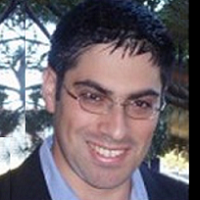 By David Ostrowsky, Corporate Communications, The Phia Group, LLC
By David Ostrowsky, Corporate Communications, The Phia Group, LLC
LinkedIn: David Ostrowsky
LinkedIn: The Phia Group, LLC
When Maria Branyas Morera came into the world on March 4, 1907, Theodore Roosevelt was president, movie theater admission was a nickel, and electric washing machines had yet to become standard household items. In August 2024, Morera, who was born in San Francisco before moving to Spain with her family, passed away at the miraculous age of 117, at the time the oldest known human on earth. As she outlived the average female lifespan – both in America and Spain – by over 35 years, there was naturally a great deal of intrigue as to how Maria made it to 117 in remarkably good health. In the final year of her life, Maria was gracious enough to allow researchers to study samples of her blood, urine, saliva and stool, along with extensive information about her lifestyle and health, the results of which comprised one of the most comprehensive examinations yet of a supercentenarian (one who lives to be at least 110) and was published by Cell Reports Medicine this past September.
Expectedly, genetic factors figured prominently into Morera’s exceptionally long time on Earth. Her cells were found to carry most of the gene variants that contribute to DNA repair and the body’s ability to remove dead or malfunctioning cells, control inflammation and generate robust mitochondria. Further, Maria had a hardy immune system and lacked gene variants susceptible to heightened risks for cancer, Alzheimer’s, diabetes, and other severe chronic illnesses.
But technical and complex medical explanations aside, lifestyle choices were also attributing factors to the astounding longevity. Earlier this month, the Washington Post wrote, “Maria Branyas Morera’s life was simple. She enjoyed yogurt, gardening, sleep, books, walks, friends, playing the piano and dogs.” On the surface, it may seem like a simple routine to follow, but when considering the lifestyle within the context of social determinants, it is undeniable that many face significant headwinds.
For one, Maria was an avid eater of Greek plain yogurt, reportedly having three helpings each day in her final years. Indeed, Greek plain yogurt is an extremely healthy, protein-packed food, a perfect source of calcium, vitamin D, and probiotics. Though it’s not particularly expensive, Greek plain yogurt is not as readily available as other less healthy snacks (i.e., chips, candy, cookies). For those trying to cobble together an income by racing from one job to the next, taking the extra time to locate a pack of low-fat yogurts may not be feasible. Further analysis of Morera’s lifestyle indicates that she adhered to a strict Mediterranean diet (traditionally consisting of olive oil, vegetables, fruits, whole grains, fish), which has innumerable health benefits, but is, in fact, prohibitively expensive for many – not to mention far less time-efficient to follow. During her final year of life, Maria had such robust cholesterol and blood-sugar levels that her blood chemistry resembled that of someone decades younger. Unfortunately, many Americans – perhaps even the vast majority – simply lack the wherewithal to consume the nutritious foods conducive to maintaining such great health.
And it wasn’t just maintaining a nutritious and balanced diet. Maria was constantly getting exercise, whether it be through long walks or gardening. Yet for those working twelve or more hours per day, every day, to say nothing of transportation time, opportunities for cardiovascular exercise are scarce. Simple math dictates that constantly getting a good night’s sleep is very hard when one is overworked – while stressed out with making ends meet in supporting a family. And the social interaction element can’t be overlooked either: whether it’s because of a burdensome work schedule, remote living environment, or mental health conditions, not everyone has the ability to engage in regular social activities.
This is not to say that Maria Morera lived to 117 because she was a woman of tremendous means. She made conscious decisions to maintain a salubrious and active lifestyle for well over a century and – for lack of a better term – hit the jackpot when it came to the gene lottery. But it’s still quite apparent that she didn’t have barriers to leading a healthy life that are all-too imposing for many underserved populations in America, Spain, and everywhere else. Indeed, social determinants of health warrant consideration in regard to human longevity.
This article was originally published on The Phia Group blog and is republished here with permission.
